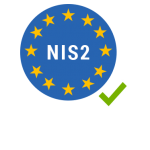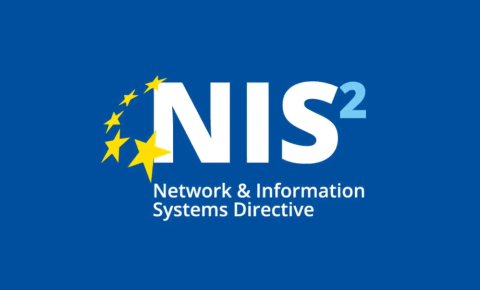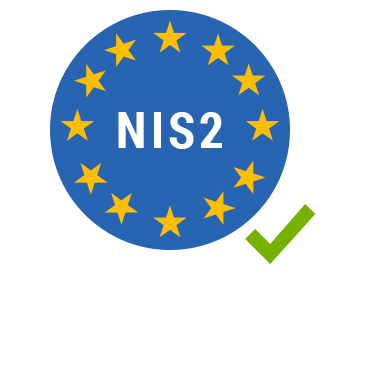
Endpoint Security Management

GoldFactory Hits Southeast Asia with Modified Banking Apps Driving 11,000+ Infections
Cybersecurity has become a critical priority for businesses across Europe, especially after the implementation of the NIS2 Directive in October 2024. Meanwhile, NIS2 and GDPR compliance work together to create a robust framework for protecting data and critical infrastructures.
Understanding NIS2 Directive and Its Relationship with GDPR
What Is the NIS2 Directive?
The NIS2 Directive (Network and Information Systems Security) represents the latest European legislation in cybersecurity. Therefore, companies must implement strict security measures for network and information systems to ensure resilience and continuity.
First and foremost, NIS2 focuses on critical infrastructure resilience, while GDPR targets personal data protection. However, these two directives complement each other in numerous areas, creating a comprehensive compliance framework.
Sectors Affected by NIS2 Implementation
Additionally, it’s crucial to determine whether your company falls under NIS2 scope. The covered sectors include:
- Critical sectors: energy, transport, banking, financial market infrastructures
- Important sectors: postal and courier services, public administration, space
- Digital services: cloud computing, search engines, online platforms
Consequently, if your organization operates in these domains, you must implement NIS2 measures alongside existing GDPR requirements.
Convergence Points Between NIS2 and GDPR
Security Incident Management
On one hand, GDPR mandates reporting personal data breaches within 72 hours. On the other hand, NIS2 establishes a different timeline for incident reporting:
- 24 hours: initial notification
- 72 hours: updated report
- 30 days: detailed final report
Therefore, companies must develop unified procedures that comply with both sets of requirements while maintaining operational efficiency.
Risk Assessment and Security Measures
Furthermore, both NIS2 and GDPR require implementing appropriate technical and organizational measures. Thus, organizations must:
- Conduct regular risk assessments
- Implement granular access controls
- Ensure encryption of sensitive data
- Continuously monitor system activities

Practical Implementation: Concrete Steps for Compliance
1. Current State Assessment
First of all, conduct a comprehensive evaluation of your IT infrastructure. Additionally, identify all systems that process personal data or support critical services.
2. Integrated Policy Development
Secondly, create policies that simultaneously address NIS2 and GDPR requirements. Therefore, these policies must include:
- Incident management procedures
- Business continuity plans
- Staff training protocols
- Data protection measures
3. Technical Controls Implementation
Moreover, invest in technological solutions that support compliance:
- SIEM systems for real-time monitoring
- Backup and recovery solutions for operational continuity
- Encryption tools for data protection
- Vulnerability management platforms
Common Challenges and Practical Solutions
Managing Different Reporting Timelines
One of the main challenges is coordinating different reporting deadlines. Consequently, we recommend implementing a centralized incident management system that enables simultaneous reporting to competent authorities.
Implementation Costs
Similarly, many companies face budgetary challenges. Therefore, prioritize investments based on:
- Severity of identified risks
- Potential impact on operations
- Sector-specific regulatory requirements
Penalties and Non-Compliance Consequences
GDPR Fines vs. NIS2 Sanctions
Regarding sanctions, both NIS2 and GDPR provide for significant penalties:
- GDPR: up to 4% of annual turnover or €20 million
- NIS2: up to 2% of annual turnover or €10 million
Therefore, non-compliance can have devastating financial consequences for organizations, making proactive compliance essential.
Recommendations for European Businesses
Collaboration with Cybersecurity Experts
First and foremost, consider outsourcing security services to specialized providers. Thus, you can benefit from necessary expertise without major investments in internal staff.
Continuous Team Training
In addition, invest in employee training programs. Therefore, staff must understand both GDPR requirements and NIS2 obligations to ensure comprehensive compliance.
Monitoring Legislative Developments
Furthermore, stay updated with legislative changes and guidelines issued by national and European authorities.
Building a Unified Compliance Framework
Integration Strategy
To achieve effective NIS2 and GDPR compliance, organizations should develop an integrated approach that:
- Aligns security objectives with data protection goals
- Streamlines reporting processes
- Optimizes resource allocation
- Ensures consistent policy enforcement
Technology Stack Considerations
Moreover, selecting the right technology stack is crucial for maintaining compliance. Consider solutions that offer:
- Multi-regulatory compliance features
- Automated reporting capabilities
- Real-time threat detection
- Comprehensive audit trails
Future-Proofing Your Compliance Strategy
Emerging Technologies and Compliance
As technology evolves, so do compliance requirements. Therefore, organizations must prepare for:
- Artificial Intelligence governance
- IoT security standards
- Cloud security frameworks
- Zero-trust architecture implementation
Continuous Improvement Approach
Additionally, adopt a continuous improvement mindset by:
- Regular compliance assessments
- Updated training programs
- Technology refresh cycles
- Stakeholder feedback integration
Conclusion
NIS2 and GDPR compliance together create a comprehensive framework for cybersecurity and data protection. Consequently, companies that strategically approach implementing these directives will benefit not only from regulatory compliance but also from a more robust and secure IT infrastructure.
Therefore, investment in NIS2 and GDPR compliance represents not just a legal obligation, but an opportunity to build a more resilient and competitive business in the digital era. Furthermore, this integrated approach positions organizations for long-term success in an increasingly complex regulatory landscape.




